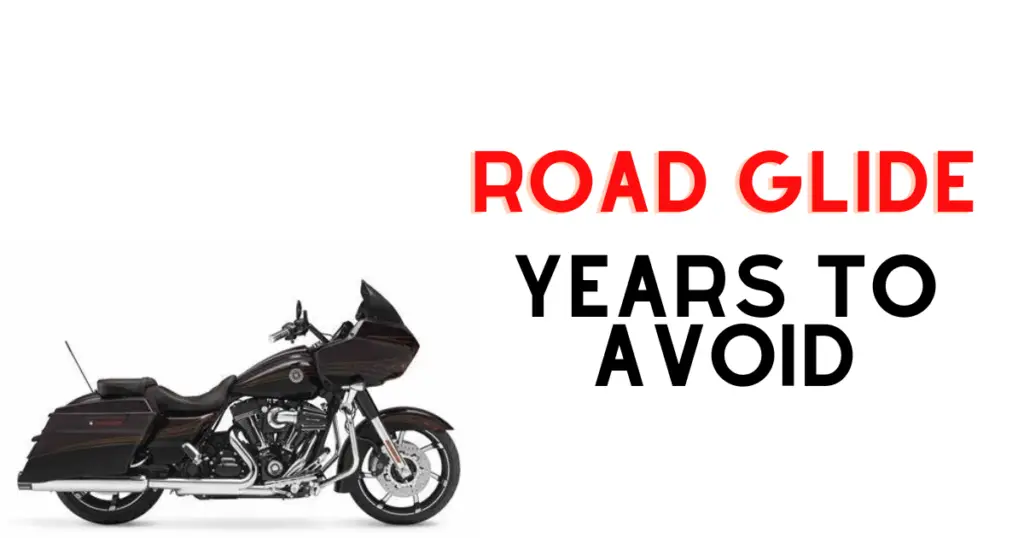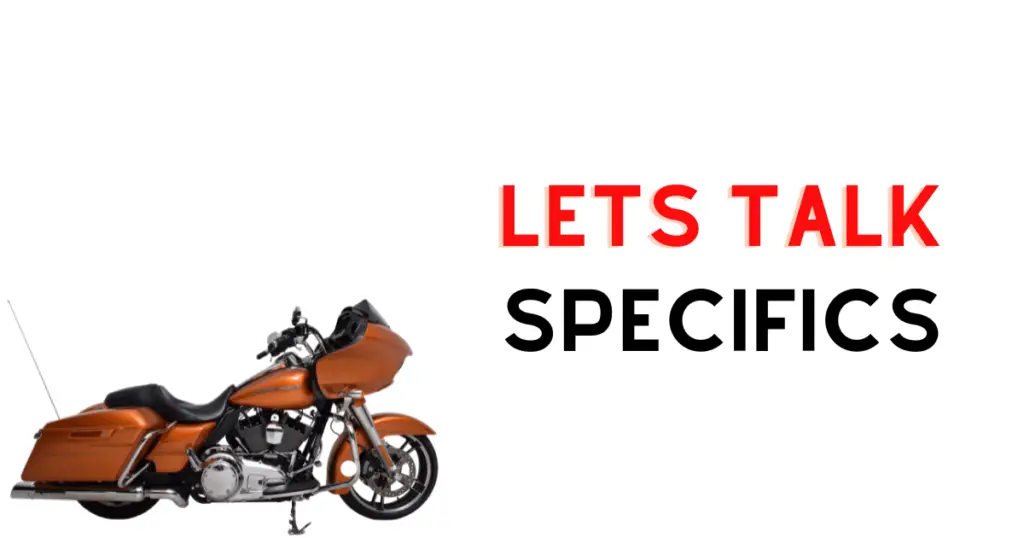If you’re in the market for a Harley-Davidson Road Glide, you’ll want to be aware of the years to avoid. While the Road Glide is a popular and sleek motorcycle, certain model years have been known to have issues that can be costly to repair. By doing your research and being informed, you can avoid purchasing a Road Glide that may cause you headaches down the road.
According to the experts I reviewed in my research, it’s best to avoid purchasing a Road Glide from certain model years; particularly, 2012, 2014, 2015, 2016, 2017, and 2018 years have been known to have various issues that can affect the bike’s performance and reliability. However, it’s important to note that not all Road Glides from these model years will have issues, so it’s crucial to do your due diligence when purchasing a used motorcycle.
When considering purchasing a Road Glide, it’s important to take into account its history and maintenance. Knowing how often the bike has been serviced and by whom can give you insight into any potential issues that may arise. Additionally, it’s best to have a trusted mechanic inspect the bike before making a purchase to ensure that it’s in good condition. By being informed and taking the necessary steps, you can find a Road Glide that will provide you with a smooth and enjoyable ride for years to come. But, keep reading and I’ll show you more about these Road Glide years, why they should be avoided, and what you can do to hedge your bets against winding up with a basket case of a motorcycle.
Related read: Round ‘Em Up: What Year Harleys To Avoid? (Full Overview)
Identifying the Road Glide Years to Avoid

If you’re in the market for a used Harley-Davidson Road Glide, it’s essential to know which model years to avoid. Here’s what you need to know about the notorious model years and common problems across certain years.
Notorious Model Years
According to seasoned professionals, the following years are the ones to steer clear of:
- 2012
- 2014
- 2015
- 2016
- 2017
- 2018
These model years have been reported to have engine problems, electrical issues, suspension problems, oil leaks, brake system issues, and knocking engines.
General Reported Problems With The Road Glide
The 2009-2013 models are noted for their robust build and enduring performance. However, the 2009 and 2013 models have been reported to have engine problems, including knocking engines. The 2010-2013 models have also been reported to have transmission issues.
The 2014 model year has been reported to have electrical issues, including problems with the charging system. The 2015 model year has been reported to have suspension problems, including issues with the front suspension.
The 2016 model year has been reported to have oil leaks, while the 2017 model year has been reported to have brake system issues. The 2018 model year has been reported to have Bluetooth connectivity problems.
In conclusion, if you’re looking for a used Road Glide, it’s best to avoid the model years listed above. Instead, consider the 2009-2013, 2016, 2019, and 2020 model years, which have received praise for their significant updates, improved performance, and reliability.
Year-Specific Issues and Recalls

When considering buying a used Road Glide, it’s important to know about any year-specific issues and recalls that may affect your purchase. Here are some of the common problems reported in certain model years:
Electrical and Charging System
The 2012 Road Glide has been reported to have electrical issues that may cause a loss of power while riding. This is due to a faulty voltage regulator that can fail and cause the battery to drain. Harley Davidson issued a recall for this problem, and affected bikes were repaired for free at authorized dealerships.
Engine and Transmission Problems
The 2017 Road Glide was reported to have engine problems that caused a loss of power while riding. This was due to a manufacturing defect in the engine that affected the oil flow, leading to engine failure. Harley Davidson issued a recall for this problem, and affected bikes were repaired for free at authorized dealerships.
The 2014-2016 Road Glide models were equipped with a six-speed transmission that was reported to have shifting problems. This was due to a design flaw in the transmission that caused it to slip out of gear. Harley Davidson issued a recall for this problem, and affected bikes were repaired for free at authorized dealerships.
It’s important to note that Harley Davidson has addressed these issues in subsequent model years, and it’s always a good idea to check with an authorized dealership to see if any recalls or repairs have been completed on a used Road Glide you’re considering purchasing.
Road more: 5 Years of Road Glide Problems To Be Aware Of (No, For Real)
Maintenance and Longevity Recommendations to Avoid Issues
Regular Maintenance Practices
To ensure that your Road Glide lasts for years to come, it’s important to perform regular maintenance practices. This includes regular oil changes, checking tire pressure, and ensuring that your brakes are in good condition. By keeping up with these basic maintenance practices, you can prevent premature wear and tear on your bike.
It’s also important to keep track of your maintenance records. This will help you stay on top of when your bike is due for its next oil change or other maintenance tasks. By keeping detailed records, you can also identify any patterns of wear or issues that may arise over time.
Durability and Common Wear
The Road Glide is a durable bike, but like any vehicle, it will experience wear and tear over time. Some common areas of premature wear include seals, tires, and brakes. To prevent premature wear, it’s important to keep up with regular maintenance practices and address any issues as soon as they arise.
When it comes to tires, it’s important to ensure that they are properly inflated and have enough tread. This will not only help prevent premature wear but also ensure that your bike handles properly on the road.
In terms of brakes, it’s important to keep them in good condition to ensure your safety on the road. This includes regularly checking the brake pads and rotors for wear and addressing any issues as soon as they arise.
Overall, by keeping up with regular maintenance practices and addressing any issues as soon as they arise, you can ensure that your Road Glide lasts for years to come.
Frequently Asked Questions
Which Harley-Davidson Road Glide models should I avoid?
If you’re looking for a used Harley-Davidson Road Glide, it’s important to know which models to avoid. According to experts, you should steer clear of the 2012, 2014, 2015, 2016, 2017, and 2018 models. These years have been known to have issues with the engine, transmission, and electrical systems.
What are the most reliable Harley-Davidson Road Glide model years?
The most reliable Harley-Davidson Road Glide model years are the 2019 and 2020 models. These bikes have been praised for their improved handling, smooth ride, and advanced technology features. However, keep in mind that even the most reliable models can have issues, and it’s important to maintain your bike properly to prevent problems from occurring.
How did the Road Glide evolve over the years?
The Harley-Davidson Road Glide has undergone several changes and improvements over the years. The first Road Glide was introduced in 1998, and since then, the bike has seen updates to its frame, engine, suspension, and electronics. The latest models offer advanced features like touchscreen displays, Bluetooth connectivity, and keyless ignition.
What are common issues with certain Road Glide years?
Some common issues with certain Road Glide years include engine problems, transmission issues, and electrical system failures. The 2012, 2014, 2015, 2016, 2017, and 2018 models have been known to have these issues, so it’s important to do your research before buying a used bike.
What should I look for when buying a used Road Glide?
When buying a used Road Glide, it’s important to inspect the bike carefully for signs of wear and damage. Look for scratches, dents, and rust on the frame and body, and check the tires, brakes, and suspension for signs of wear. It’s also important to ask the seller about the bike’s maintenance history and any repairs or upgrades that have been made.




Leave a Reply
You must be logged in to post a comment.